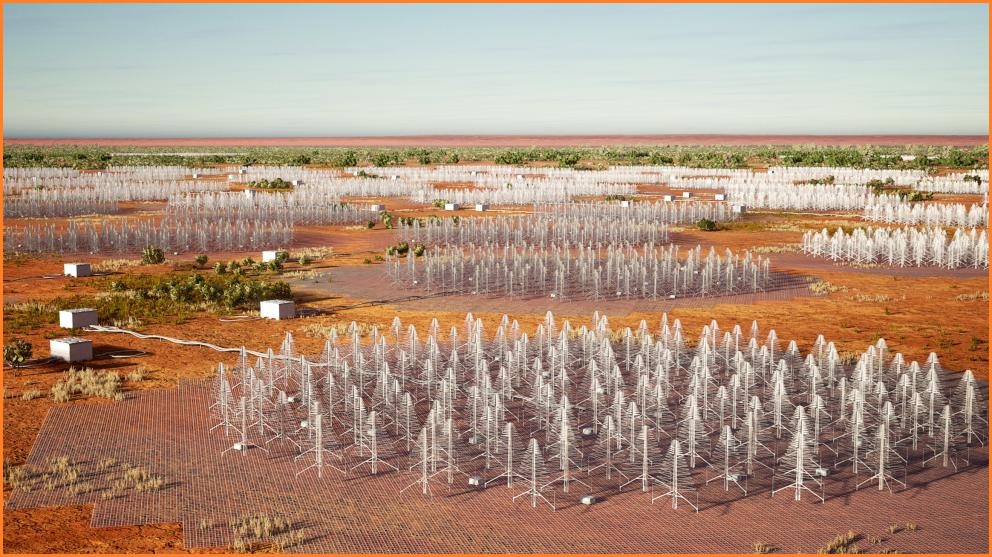Construction of Australia’s contribution to the Square Kilometre Array (SKA) began this week on the ancestral lands of the Wajarri Yamaji people in WA, marking the first steps of a decades-long project to peer further into space.
More than 130,000 Christmas tree-like antennas will make up the low-frequency portion of the SKA which is complimented by a set of 200 mid-frequency dishes in South Africa which will have a combined data collection area of one square kilometre.
Data from the two sites will be transmitted at a rate of 8Tbps to an observatory in the UK for processing in supercomputers.
Industry and Science Minister Ed Husic broke ground at the SKA site on Monday, saying the project will let astronomers uncover more about our universe.
“Australia’s membership of the SKA Observatory is not only good for industry today but will inspire generations of Australians to dream big and follow a career in STEM,” he said.
“It will also provide an incredible platform for the nation to show our incredible scientific knowledge and research on the world stage.”
Importantly, an indigenous land use agreement for the SKA site was signed with traditional owners from the Wajarri Yamaji community.
Jennylyn Hamlett, Wajarri Yamaji Aboriginal Corporation Chairperson and Minangu Land Committee member said the SKA was an opportunity to share cultural knowledge about the skies with the rest of the world.
“We’re all connected to this country, regardless of where we come from,” she said. “We are Wajarri, we are here and we’re ready to share, so welcome aboard.”
The land use agreement intends to maintain Wajarri cultural heritage and protect sacred sites, along with providing the community with job and educational opportunities relating to the project.
The CSIRO’s nearby Murchison Radio-astronomy Observatory has also been given the name Inyarrimanha Ilgari Bundara which is Wajarri for ‘sharing sky and stars’.
Once it is up and running, the SKA will offer a new perspective on the universe from the Southern Hemisphere including a better view of the Milky Way.
The project has been decades in the making and has included sub-projects like the Australian Square Kilometre Array Pathfinder (ASKAP) which in 2022 completed its first full survey of the sky.
Data from that run-through was one of the first things parsed through the Pawsey Supercomputing Research Centre’s new $48 million Setonix supercomputer and created dazzling images of a dying star.
Swinburne astrophysicist Professor Adam Deller said he was keen to see what the SKA will bring for our understanding of the universe.
“The Square Kilometre Array telescope has been the ‘next big thing’ in radio astronomy since I started my PhD over 15 years ago, so it is incredibly exciting that the project is now reaching the milestone of breaking ground at its Western Australia site,” he said.
“The next few years are going to be a whirlwind for the large team of scientists and engineers that will be building and commissioning this complex instrument, and the science community can’t wait to get our hands on the first science data later this decade.”










